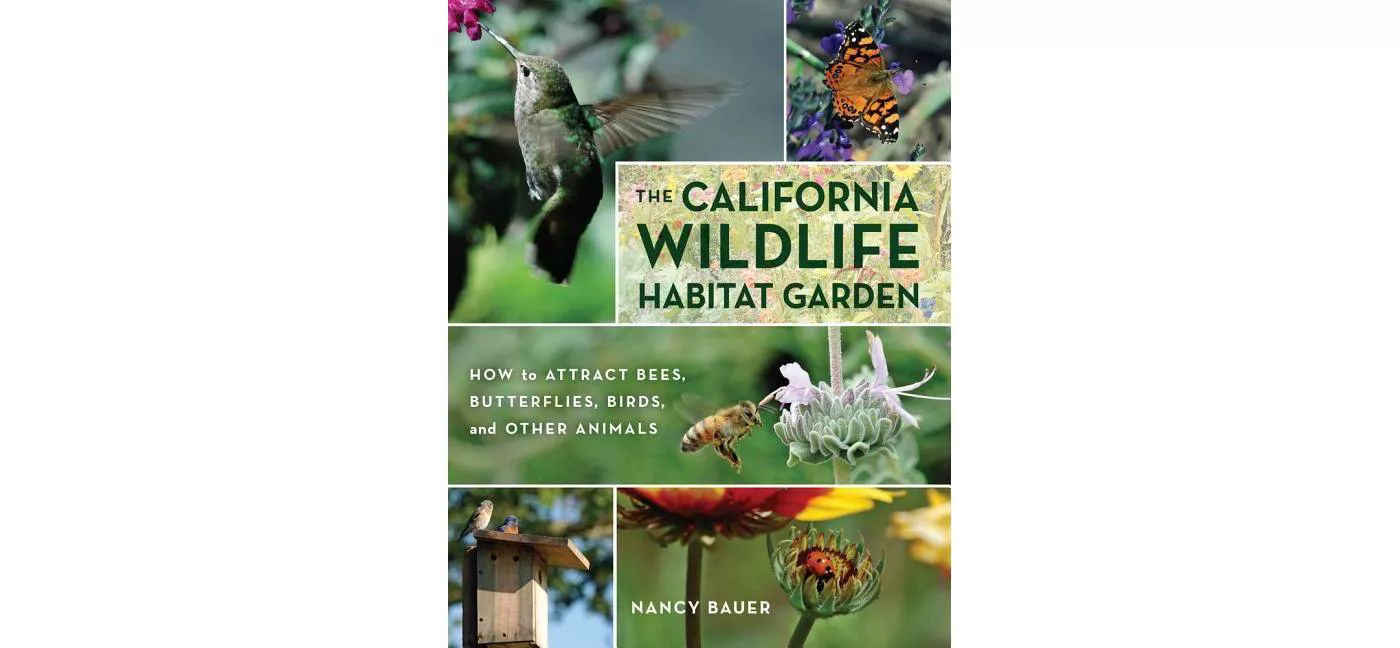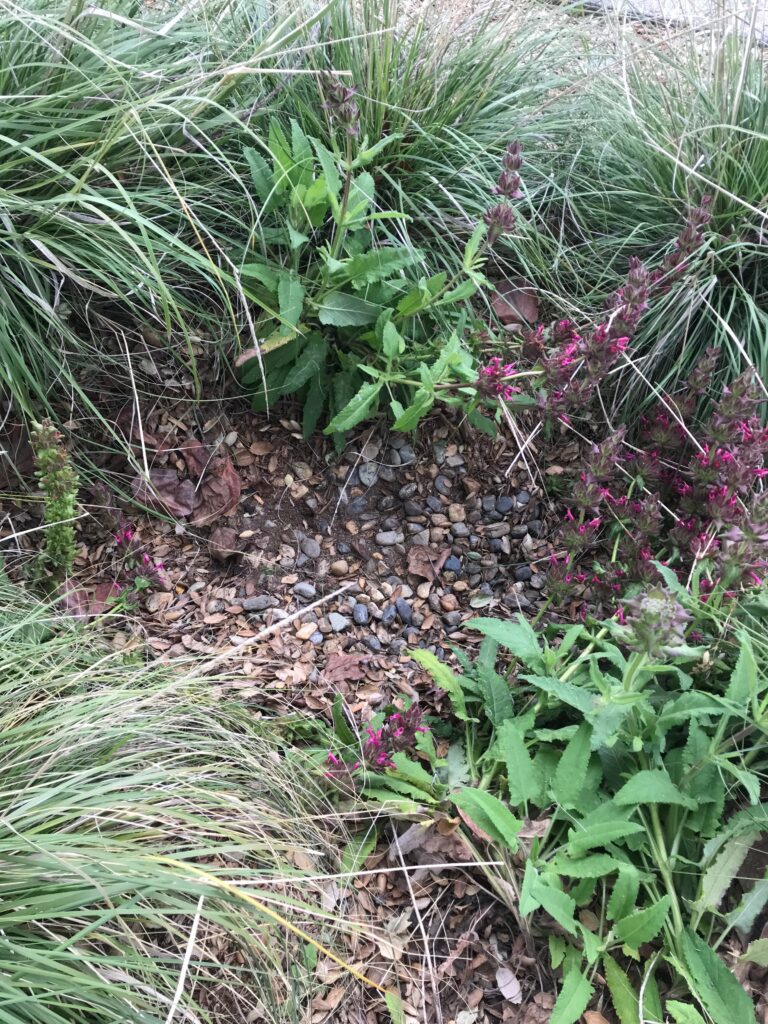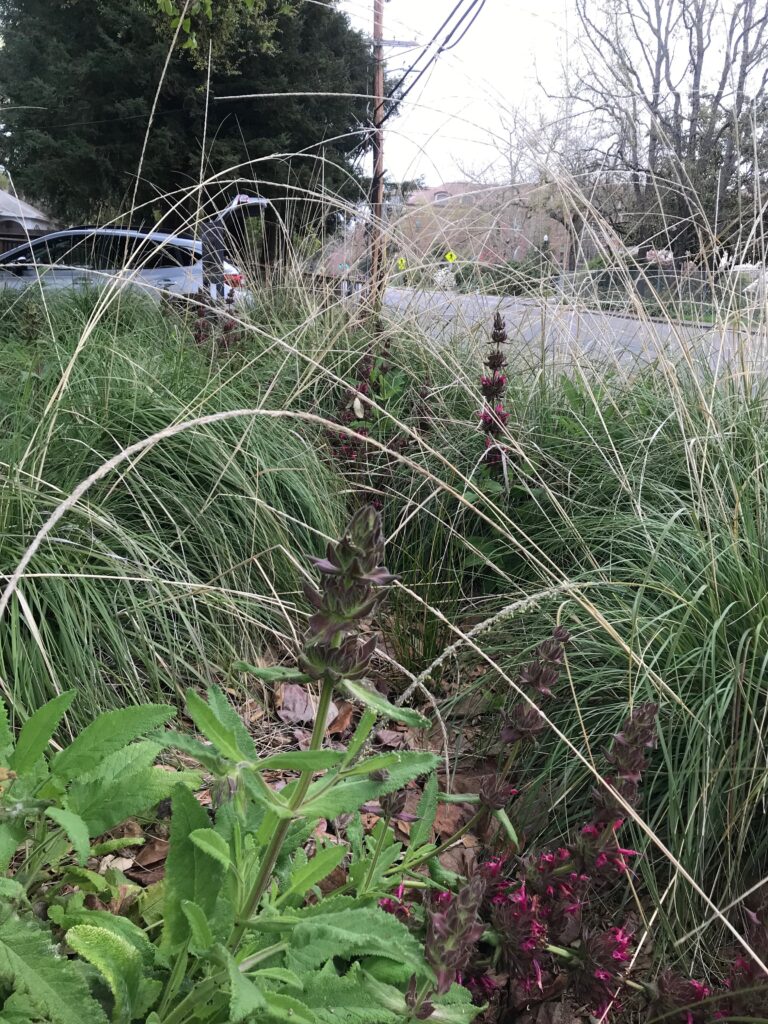  |
| Happy Friday! There is a bunch going on around here at the Habitat Corridor Project. A brief update:Our Sebastopol Corridor Project is thriving – these sites only get bi-weekly water at the most – and the plants are doing well. We need to be able to see the seasons in the garden and some brown is OK! California native plants have deep roots that are adapted to drought cycles helping them survive. HabitatCorridorProject.org The Recology Pollinator Garden at 3400 Standish Ave in Santa Rosa is prepped for Fall planting and the BEAUTIFUL mural by Artstart is up — you must go visit. We planted a small test area of California natives that are surviving on low water use drip irrigation sprays for now – the big planting will come when the rains come.The Resilient Landscapes Coalition, of which we are founding members with the Sonoma County UC Master Gardeners and the Sonoma Ecology Center, was funded for the year by the Supervisor’s Vegetation Management Grant. Super, super exciting! SonomaResiliantLandscapes.comI must admit – I am feeling very worried about climate change, drought and the already active fire season. I’m afraid everyone will stop watering their trees – please water your trees. One of the most important messages the Resilient Landscapes Coalition (Mimi Enright, Ellie Insley and I) have uncovered is that the first 5′ from your home and vigilant maintenance this time of year the best way to protect your home with your landscape. Start clearing leaves – just keep 2″. Save your water todampen them on red flag days with cisterns or other vessels. Get rid of all of the foundation plantings around your home depending on where you live. This is a tough one but of utmost importance if you live in the Wildlife Urban Interface. In our designs we certainly try to get creative in the 0-5′ zone. Use dry creek elements, pretty pebble, boulders, fountains, containers with succulents, compost, and other non combustible materials to make this area look great and provide protection from embers. And my personal mission for aesthetics and resilience – please do not use Gorilla Hair or dyed mulches. Stick to a good compost with a lot of wood mulch incorporated in it or simple Arbor Mulch.    Stay safe out there – let me know your thoughts on this email please. With Love, April April Owens Proud Executive Director, the Habitat Corridor Project [email protected] HabitatCorridorProject.org |
Bumblebee blog
Our native manzanitas are flowering now and they will attract many early spring pollinators, including those fuzzy black and yellow-haired bumblebees. There are 26 native species of bumblebees in California and they live in small colonies in the ground, which is a very good reason to leave some patches of bare earth in your garden space as nesting opportunities. The fertilized queens, who are the only survivors at the end of the year, hibernate until spring when it’s time to start up new colonies. The queen will be the first bumblebee out foraging on early spring flowers for nectar and pollen, which are brought back to the nest as nourishment for the new brood. Bumblebees use many different nectar plants, but early blooming salvias such as brandegee sage, black sage or low growing sages such as ‘Bee’s Bliss’, ‘Dara’s choice’ or ‘Mrs. Beard’ are bumblebee magnets. Also, early blooming pink-flowering currant, coffeeberry, and ceanothus. My choice for best bee nectar plant is tansy-leaf phacelia (you may have to grow this one from seed); another habitat gardener’s favorite: Ceanothus ‘Gloire de Versailles , which blooms all summer and is loved by all pollinators.
Our Latest Newsletter
DRAGONFLIES
Habitat Notes
A few weeks ago April was excited to spot a beautiful reddish-orange dragonfly in her garden. She sent me the photo, hoping I could identify it. This beauty was a Flame Skimmer, common to ponds, lakes, and streams in California. April wondered what it was doing in her garden — no wildlife pond there. Even without a pond, a garden with plants that attract a lot of flying insects may also attract a wandering dragonfly looking for dinner. These insect predators spend most of their lives underwater where they will spend at least one winter season. Hiding out in pond debris and underwater vegetation, a dragonfly nymph preys on mosquito larvae, aquatic insects, and tadpoles. When ready to emerge, the dragonfly climbs up a plant stem, sheds its skin above water, and when its wings are dry, flies off. Dragonflies may live for only a few weeks after they emerge, so male dragonflies waste no time looking for a mate. When mating, a male dragonfly grabs the female behind her eyeballs, using appendages at the end of its abdomen. Females lay their eggs directly into the water or on aquatic vegetation, and the cycle begins once again.
-Nancy Bauer, Co-Creator and Board President
Coffeeberry Packs a Pollinator Punch
Nancy Here: Coffeeberry (Frangula) at the Sebastopol Center for the Arts
I especially love stopping by to see what is going on at our habitat garden at the Sebastopol Center for the Arts. Last time I checked there was a lot of action on coffeeberry. One of our favorite garden shrubs for the garden and for hedgerows, coffeeberry has great wildlife value. And April/May is the bloom time. Last time I looked the shrubs were buzzing with bumblebees and honeybees, nectaring on the tiny greenish flowers. In fall and winter the small black berries provide food for finches, mockingbirds and other songbirds. The beautiful Pale Swallowtail and Gray Hairstreak butterflies use coffeeberry as caterpillar host plants. It has beautiful dark green foliage, is fast growing (we’ve planted “Pt. St George’ which has a compact shape, to 4 ft.), is drought tolerant and grows in sun or part shade.
Nancy Bauer
President and Co-founder, the Habitat Corridor Project and Author
AND…a note from April
Happy Friday!
I’m sitting here in my home office watching a little hummingbird have dinner in my garden- they seem to be most appreciative of the red blooming plants. Yesterday, I enjoyed a couple of Robins in our bird bath. I didn’t have my phone with me (thankfully) so I just sat and watched. It was delightful.
Thank you so much for serving our community by observing the shelter in place order. I know it is so tough not getting out into our beautiful natural spaces. To help, Nancy and I will provide you easy to achieve tips and tools to create more habitat in your garden over the next months. We also have a self guided tour of the Sebastopol Corridor Project on our website. Print it out, take a walk. The gardens look amazing right now.
Please scroll down for a real treat – Nancy will fill you in on the Dutchman’s Pipe vine and the amazing butterflies they attract. One flitted by me this week – they always make my heart race! So lovely.
Stay Safe, Stay Strong! and we will get through this.
With LOVE,
April
Proud ED, the Habitat Corridor Project
[email protected]
PS, please tell me how you are getting nature in your life- pop me an email or call 707.634.6192. Add a picture too and we will add it to our next email newsletter.
Sebastopol Habitat Corridor Project Update:
The beautiful black Pipevine Swallowtails are emerging and looking for pipevine, their only caterpillar host plant. We’ve started a Dutchman’s pipevine (Aristolochia californica) at the Center near the entrance. Be patient —they can take a year or two to take off, climbing a trellis or tree or sprawling across the ground. Be sure to leave them some room to grow. Pipevine often grows in filtered sun near creeks and other wet areas. They like their roots in the shade but want to climb or move toward the sun. The funny pipe-shaped flowers appear first, then the bright green leaves. I planted two of these deciduous vines under an elderberry tree where they both climbed the tree and spread out on the ground. Grasses, too, serve as butterfly host plants: we have planted various species at our downtown Sebastopol gardens. Skippers (the tiny butterflies in shades of gold, orange and brown) use hairgrass (Deschampsia caespitosa), rye grass (Elymus spp.), Muhlenbergias, Nasellas, Boutelouas, Festucas and other bunchgrasses as caterpillar host plants.
Nancy Bauer, Habitat Corridor Project Co-Creator, Board President and
Author: The California Wildlife Habitat Garden: How to Attract Bees, Butterflies, Birds, and Other Animals (UC Press)
Want some Dutchman’s Pipe?
It’s a little tough to find but super doable! they will have it at the Fall plant sale for CNPS Milo Baker in October, contact your local chapter of the California Native Plant Society and California Flora is sure to have it for sale soon.
Stay tuned on their websites:
https://milobaker.cnps.org/
https://www.calfloranursery.com/
https://www.cnps.org/

Quail Hedgerow
We came up with this wonderful combination for a fire rebuild this week. The clients love their resident Quail but not so much the brambles they are living it.
Add some wonderful California native plants in masses of 3-5. We like islands that are at least 6′ x 10′ with about 4′ between the groupings.
The best part – the plants:
Baccharis pilularis – Coyote Brush – Food and cover. Give them about 3′ between and give a good cut back every 2 years for fire – wise maintenance.
Berberis aquifolium – Mahonia – Cover – this prickly bush will protect the Quail from resident cats.
Salvia ‘Pozo Blue’ and ‘Point Sal Spreader’ – for some reason the Quail especially like these species of salvia for their seed so don’t dead head until they are all gone.
You are welcome! Please let us know how it goes at [email protected].
Butterfly and Hummingbird Swale
We’ve been having fun experimenting on small scale projects that can really transform the habitat value of your garden. At the Sonoma Living Learning Landscapes we created this lovely little bermed swale by digging a 2’x 15′ low place for the water to collect and bringing in about 5 yards of the leanest soil we could find to berm up along the sides.
Then we added some shrubs (Frangula californica – Coffeeberry), grasses (Muhlenbergia rigens – Deer Grass) , a whole lot of Hummingbird Sage (Salvia spathacea) and Milkweed (Asclepias species). There is cover and protection from predators, a low place for water to accumulate, food for the birds and butterflies. We also added some 1″ pebble for the excess irrigation to accumulate on – butterflies love that! It is an easy weekend project that doesn’t cost much at all. Food, Water, Cover.


The Sebastopol Corridor Project
Manzanita and Currant
Check out the manzanita —in full bloom— and the pink-flowering currant (just starting) at the Sebastopol Chamber of Commerce garden. The soft pink pendants of the pink-flowering currant (Ribes sanguineum) are a favorite of bees and hummingbirds and an especially important nectar source for our year-round resident, Anna’s hummingbird, which can be nesting as early as December. CalFlora nursery carries many beautiful varieties of this semi-deciduous and airy shrub. “Phil’s” favorite, featured in their April newsletter, is the dark pink ‘Tranquillo Ridge’, a selection from Marin County.
